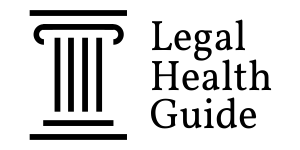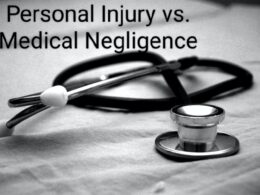If you work in the healthcare industry, it’s important to understand the difference between medical claims and pharmacy claims.
The world of healthcare is complex and ever-changing, and one area that often causes confusion is the difference between medical claims and pharmacy claims.
With the rise of specialty drugs and the increasing importance of clinical care services, it’s more important than ever to understand the nuances of these two types of claims.
This post will extensively look at the key differences between medical claims and pharmacy claims, including how they’re processed, what types of services they cover, and how they impact patients and providers.
What Are Medical Claims?
Overview
Medical claims refer to the process of submitting a request for payment to an insurance company for medical services rendered. This process is used to reimburse healthcare providers for services provided to patients. Medical claims can be submitted by a variety of entities, including healthcare providers, hospitals, clinics, and pharmacies.
Process
The process of filing a medical claim involves several steps.
First, the healthcare provider must obtain the patient’s insurance information and verify that the patient is covered for the services being rendered.
Once the services have been provided, the provider must submit a claim to the insurance company. This claim must include information such as the patient’s diagnosis, the CPT or HCPCS codes for the services rendered, and the National Drug Code (NDC) for any medications prescribed.
The insurance company will then review the claim to determine whether the services provided are covered under the patient’s insurance policy.
If the claim is approved, the insurance company will reimburse the healthcare provider for the services rendered, minus any deductible or co-pay required by the policy.
Entities
Several entities are involved in the medical claims process. These include healthcare providers, insurance companies, payers, and claims data.
Healthcare providers are responsible for submitting claims for services rendered to patients. Insurance companies are responsible for reviewing and approving claims for reimbursement.
Payers are intermediaries that process and pay claims on behalf of insurance companies. Claims data provides insights into patients’ health conditions, hospitalizations, and gaps in care.
Medical billing codes, such as CPT and HCPCS codes, are used to identify the procedures and services provided to patients.
The NDC is used to identify medications prescribed to patients. Diagnosis codes are used to identify the patient’s medical condition and justify the services provided.
In a nutshell, the medical claims process is a complex system that involves several entities and codes. It is essential that healthcare providers understand the process and follow the correct procedures to ensure that they are reimbursed for services rendered. By submitting accurate and complete claims, healthcare providers can help ensure that patients receive the care they need while minimizing their out-of-pocket expenses.
What Are Pharmacy Claims?
Overview
Pharmacy claims refer to the process of submitting a prescription to a pharmacy, which then bills the patient’s drug insurance and dispenses the medicine either directly to the patient or to the provider’s office.
Pharmacy claims are easier to submit and are almost always approved as long as a physician prescribed the medication and the drug is on the formulary of the patient’s insurance plan. Pharmacy claims may also involve copays, prescription numbers, and national drug codes.
Process
The pharmacy claims process involves several entities, including pharmacies, pharmacy benefit managers (PBMs), insurance plans, and third-party payers.
When a patient presents a prescription to a pharmacy, the pharmacy verifies the patient’s eligibility and benefits investigation with the insurance plan.
The pharmacy then bills the insurance plan for the medication using the appropriate national drug code and healthcare common procedure coding system codes.
The patient is responsible for paying any copay or co-insurance required by the insurance plan.
Entities
Pharmacy claims involve several entities, including pharmacies, pharmacy benefit managers, insurance plans, third-party payers, and clearinghouses.
Pharmacy benefit managers are responsible for managing pharmacy benefits for insurance plans and negotiating drug prices with pharmaceutical companies.
They also provide clinical care services and medication therapy management to patients. Insurance plans may use a tiered system for prescription drug coverage, with different levels of coverage for generic and brand-name drugs.
Third-party payers, such as employers or unions, may also provide pharmacy benefits to their members.
Administration
Pharmacy claims are typically administered through a pharmacy benefits manager, which processes claims and provides reimbursements to pharmacies.
However, some insurance plans may also administer pharmacy benefits directly. Pharmacy claims may also involve DIR fees, which are fees charged to pharmacies by pharmacy benefit managers for certain medications.
Copay cards may be used to help patients pay for specialty medications, and clinical services may be provided by pharmacies to help patients manage their medications.
Outpatient Setting
Pharmacy claims are typically submitted in an outpatient setting, such as a retail pharmacy or mail-order pharmacy. In some cases, specialty medications may be administered in a physician’s office or hospital setting using a buy-and-bill process. Equipment and supplies may also be provided by pharmacies, such as insulin pumps or diabetic testing supplies.
Payer Claims Data
Payer claims data may be used to track pharmacy claims and monitor patient behavior. Medical claims data may also be used to provide insights into patients’ health conditions and hospitalizations.
The pharmacy benefit may be compared to the medical benefit to determine the most cost-effective way to provide coverage for prescription drugs.
Utilization management may be used to ensure that patients receive appropriate medications and avoid unnecessary costs.
To sum it up, pharmacy claims are an important part of the medical billing process, providing patients with access to the medications they need. Understanding the pharmacy benefits, pharmacy benefit managers, and insurance plans involved in the pharmacy claims process can help ensure that patients receive the best possible care at the lowest possible cost.
Medical Claims vs Pharmacy Claims: Key Differences
Medical claims are submitted by medical providers, such as doctors and hospitals, for services rendered to patients. These claims are typically used for services such as surgeries, office visits, and lab tests. On the other hand, pharmacy claims are submitted by pharmacies for prescription drugs that have been dispensed to patients.
Understanding the difference between medical claims and pharmacy claims is important because they are processed differently by insurance companies.
Medical claims are typically more complex and require more information than pharmacy claims. This is because medical claims involve a wide range of services and procedures, and insurance companies need to verify that the services were medically necessary and provided by a qualified provider.
Pharmacy claims, on the other hand, are generally simpler and easier to process because they involve a single product (the prescription drug) and the insurance company only needs to verify that the drug is covered by the patient’s plan.
It’s also important to note that medical claims and pharmacy claims are processed under different insurance benefits.
Medical claims are processed under the medical benefit, while pharmacy claims are processed under the pharmacy benefit. This means that the benefits, deductibles, and copays for medical claims and pharmacy claims may be different.
By comprehending these differences, you can make informed decisions about your healthcare and ensure that you receive the benefits you are entitled to.
Frequently Asked Questions
What is the difference between medical and pharmacy claims?
Medical claims are submitted by healthcare providers for services rendered to patients, such as doctor visits, surgeries, or hospital stays. Pharmacy claims, on the other hand, are submitted by pharmacies for prescription medications that have been dispensed to patients.
How are pharmacy claims processed?
Pharmacy claims are typically processed electronically through a pharmacy benefits manager (PBM). The PBM reviews the prescription and determines if it is covered by the patient’s insurance plan. If it is covered, the PBM calculates the patient’s copay or coinsurance and reimburses the pharmacy for the remaining cost of the medication.
What is pharmacy billing?
Pharmacy billing is the process of submitting claims to insurance plans for prescription medications that have been dispensed to patients. This includes verifying the patient’s insurance coverage, submitting the claim to the insurance plan, and receiving reimbursement for the cost of the medication.
How do insurance plans pay pharmacies?
Insurance plans typically pay pharmacies through a third-party administrator, such as a PBM. The PBM reviews the claim and determines the patient’s copay or coinsurance. The PBM then reimburses the pharmacy for the remaining cost of the medication.
What are pharmacy claims?
Pharmacy claims are claims submitted by pharmacies for prescription medications that have been dispensed to patients. These claims include information such as the name of the medication, the dosage, and the cost of the medication.
Which claim form is used for pharmacy claims?
Pharmacy claims are typically submitted using the National Council for Prescription Drug Programs (NCPDP) claim form. This form includes information such as the patient’s name, date of birth, insurance information, and details about the prescription medication.
Conclusion
Knowing the differences between medical claims and pharmacy claims is essential for both healthcare professionals and patients.
Understanding how these claims are processed and what services they cover can aid patients can make informed decisions about their care. At the same time, providers can ensure that their patients receive the appropriate treatments and medications.
As the healthcare landscape continues to evolve, staying up-to-date on these important distinctions will become increasingly important.
YOU SHOULD ALSO READ:












